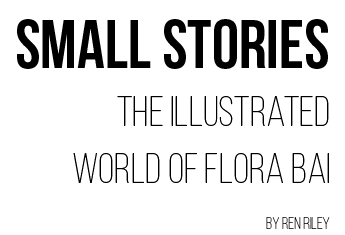
It’s easy to get lost chasing minutiae through the worlds crafted by Wuhan-born, NYC-based illustrator, Flora Bai. Born into a family of artists and exposed to galleries and exhibition openings early in her life, the doodles in the margins of her elementary school textbooks were a sign of who she would become. Today, Bai illustrates her stories through complex pieces that draw inspiration from her life, fashion, occultism, astrology, travel, literature and more.
“I’m currently focusing on accepting and loving myself for not being a perfect person,” says Bai of her creations.
“I hide small stories in my drawings because I hope my stories and emotions can be found when the viewers are looking closely or zooming in for the details. I’m not trying to please my viewers but I hear feedback that they relate to my works a lot and resonate. I guess we are all very alike and alone sometimes. Occasionally, my paintings are my diary, too.”
A close inspection of pieces like Bai’s 2021 Labels Are for Jars Not for People reveals dozens of small narratives playing out across the page.
“I hide small stories in my drawings because I hope my stories and emotions can be found when the viewers are looking closely or zooming in for the details.”
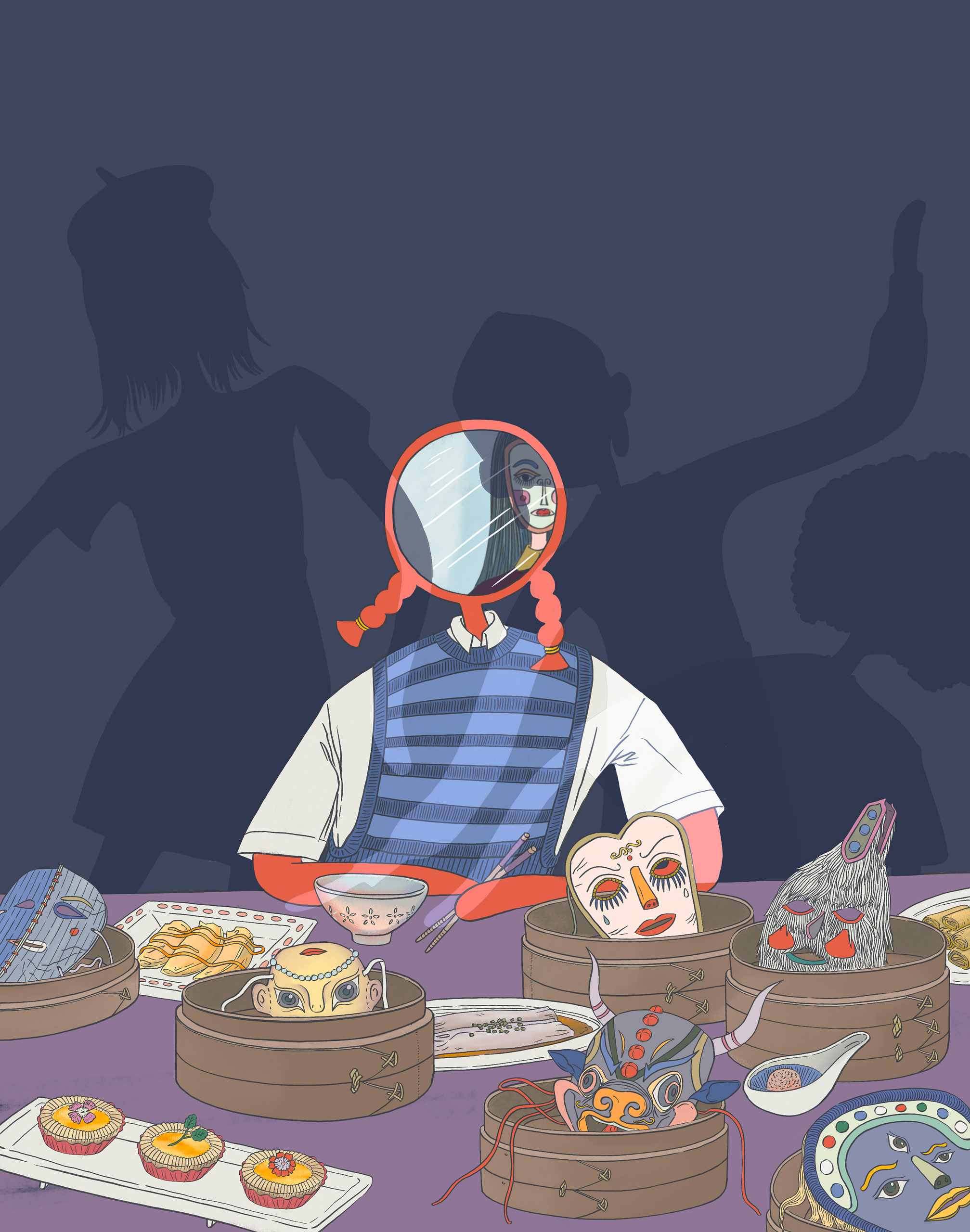
Rumor Kills
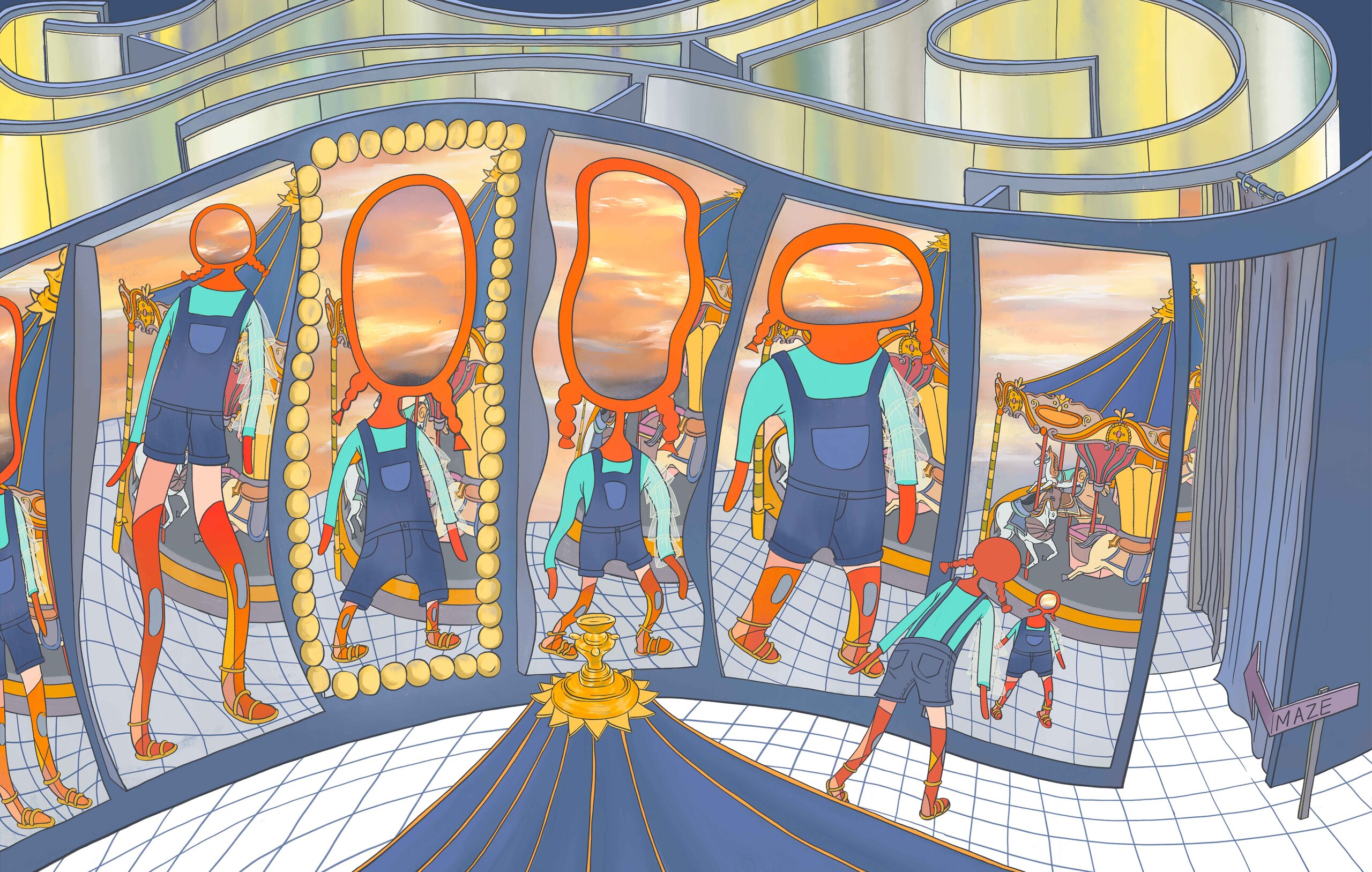
Refine Define
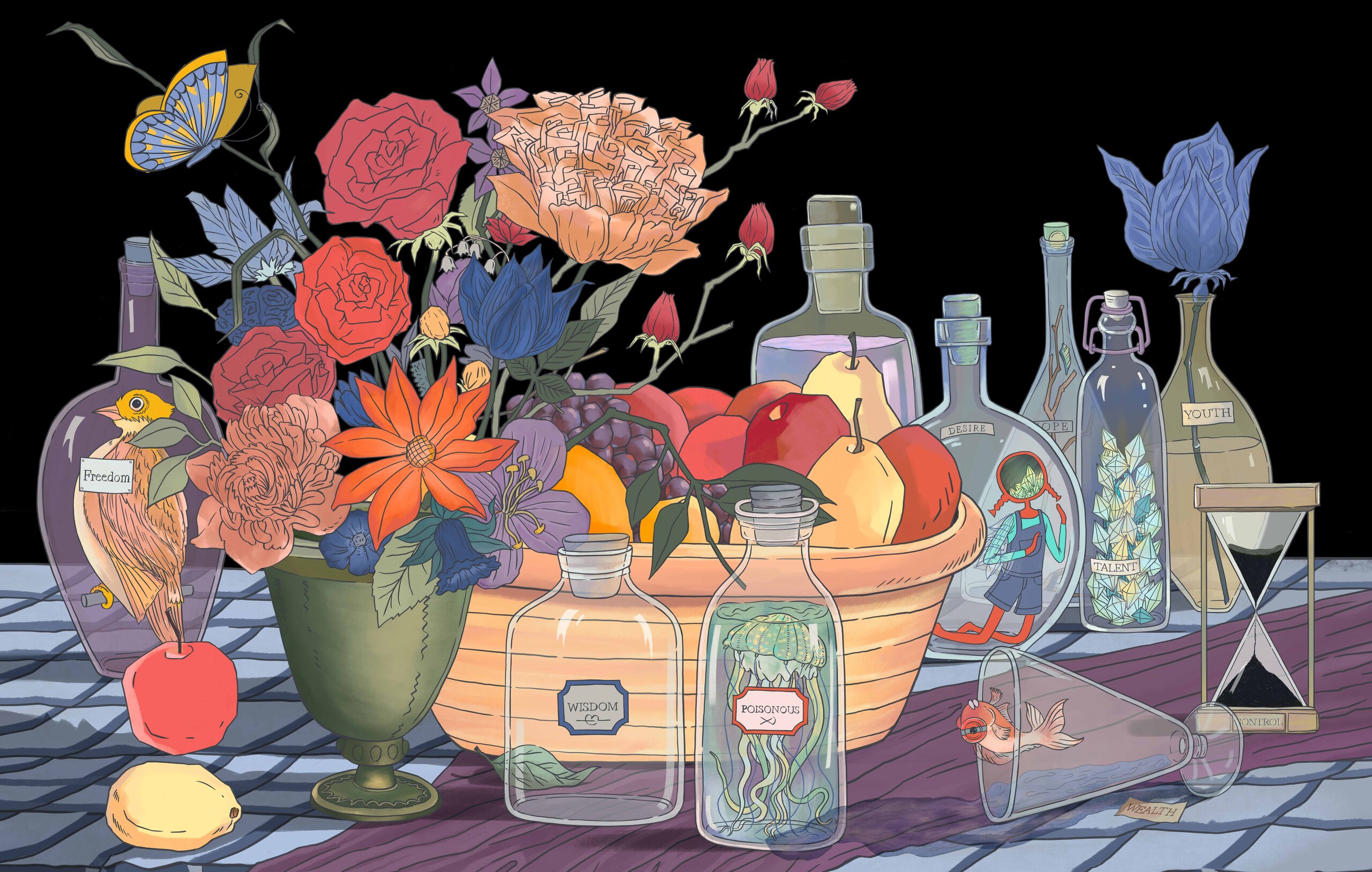
“I love how this piece looks like a still life drawing from a classic European oil painting at first glance,” explains Bai, citing it as one of the pieces that has had the greatest impact on her. “People voluntarily confine themselves to a transparent bottle for a supposedly perfect image. And they put labels on their personalities to quickly adapt to the world. Humans wear masks in social activities but my tags made me feel exhausted, hypocritical, self-imprisoned, and willingly hopeless. I realized that I had never recognized the value of my own existence in order to fit into society. This drawing is a starting point where I found my self value.”
“I realized that I had never recognized the value of my own existence in order to fit into society. This drawing is a starting point where I found my self value.”
Left: Labels are for Jars Not for People
She begins all of her pieces the same way: pen-in-hand, on paper. Once complete, Bai scans it into a computer and begins experimenting with color palettes inspired by some of her favorite role models–Ruohan Wang, KAWS, Keith Haring and Alexander McQueen. From there, she draws a more formalized revision on a light box, first in pencil, then goes back over it in pen. Finally, she scans the image into her computer and finishes the colors and textures in Procreate or Photoshop.
This way of expressing her stories has helped her to relate to the world around her, in that both the physical and mental processes of creating art bring her peace and clarity. She sees her creativity as a dome encasing her anxiety, allowing her to enjoy the process of a project instead of focusing entirely on the end result. While that mindful practice is still a work in progress for her, she enjoys the way her art allows her to slow down and feel her emotions.
“When drawing long lines, I need to hold my breath and stay very focused so that my hand follows the direction of my brain,” Bai explains. “And because of that, my anxiety will disappear. It’s kind of like the process of traditional Chinese calligraphy, the practice of drawing is also a practice of your mind.”
She also believes art has the power to bring warmth to her community. She uses her drawings to leave a mark on the wider world. As personal as the symbols and scenes in her imagery can be, she sees them as the ultimate tool for connecting with others.
“Artworks are very private things to artists, because what is shown to the world is the soul of those artists. And when one soul was found by another soul (or a group of other souls) who felt the resonance, they are not alone anymore.”
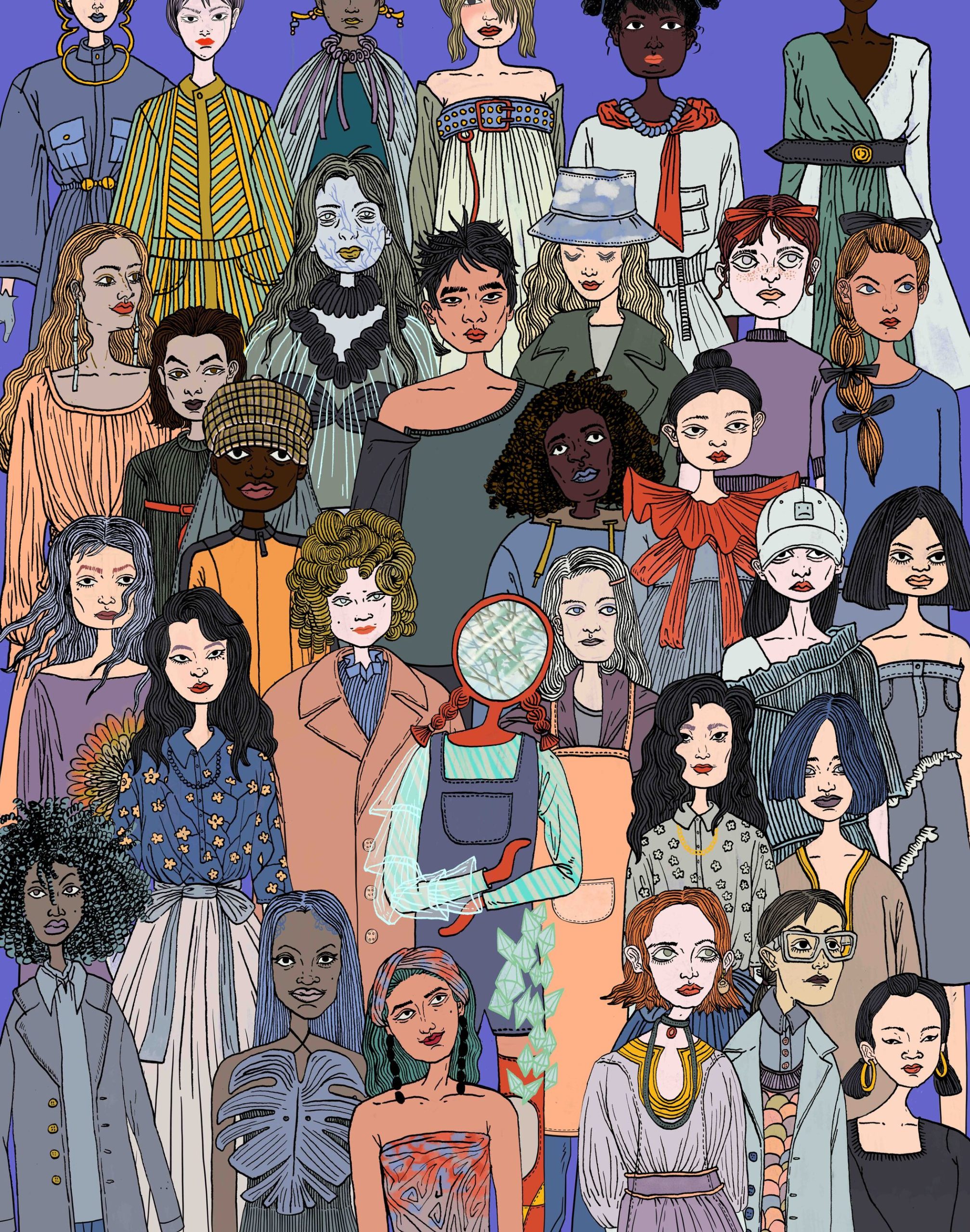
I Want to Be Different Like Everybody Else
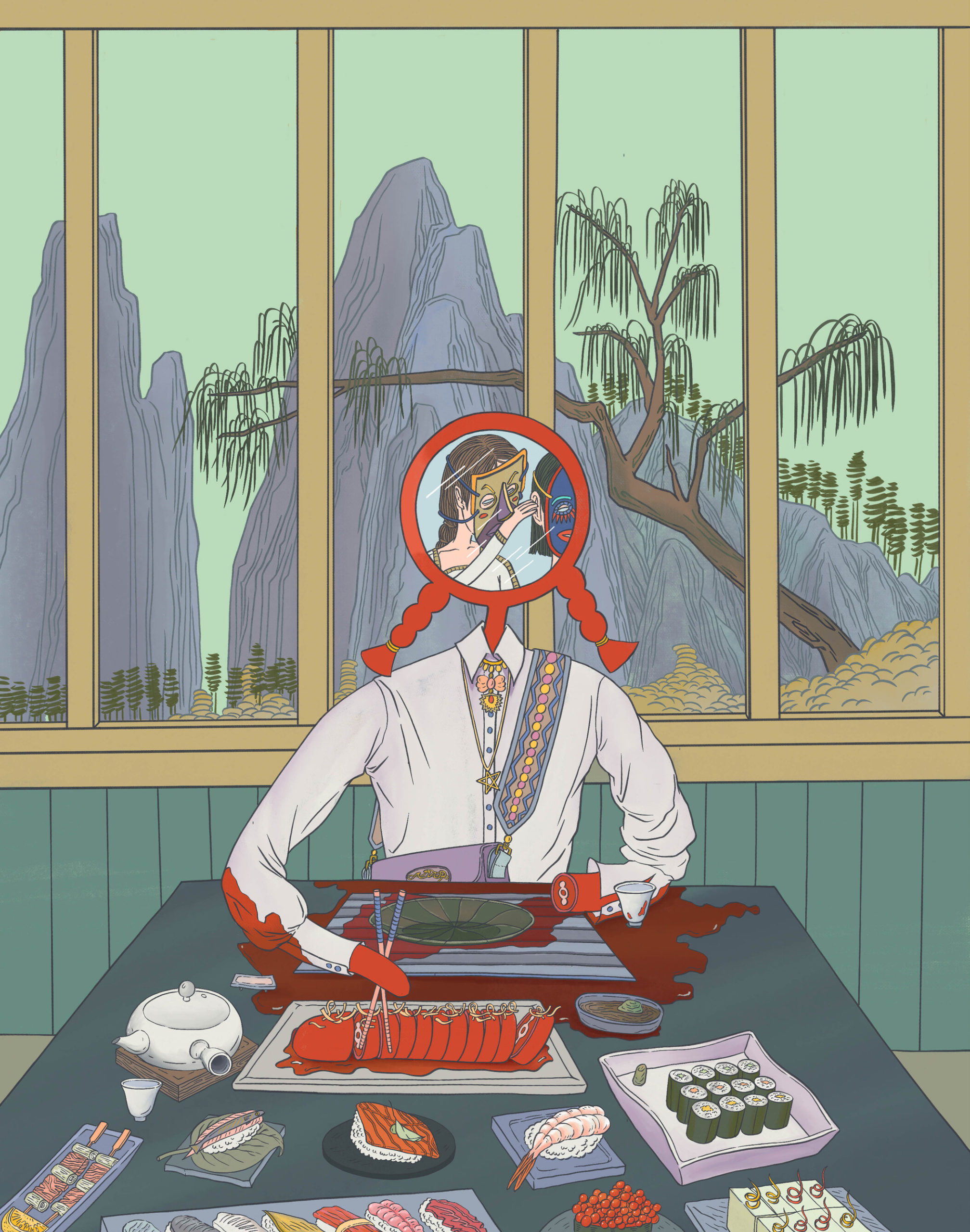
Rumor Kills II
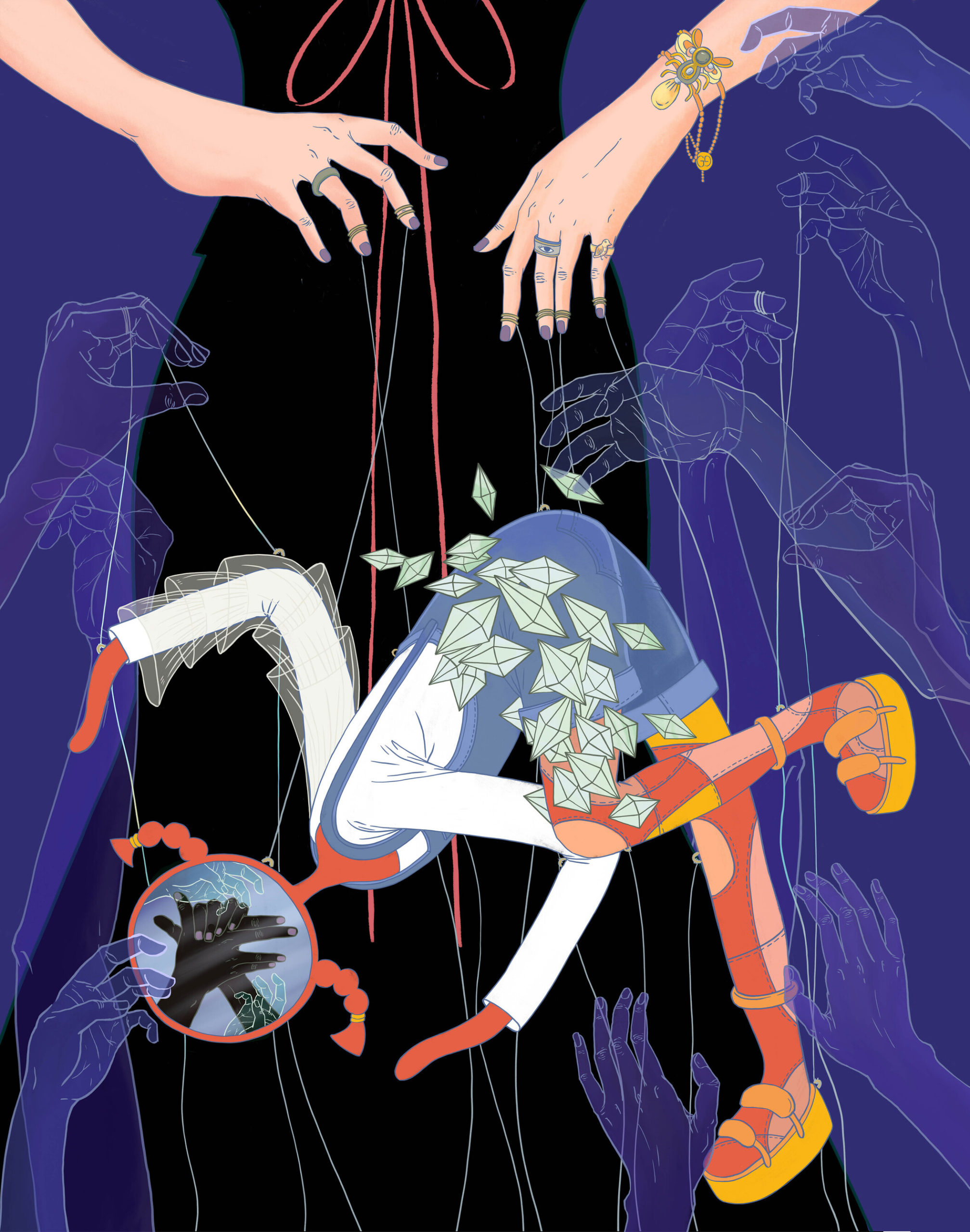
Me the Puppet Too
